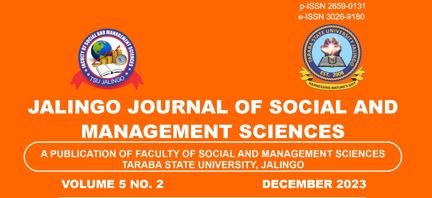Physicochemical and Ecotoxicity Studies of Soil and Water Around an Abandoned Uranium Mine Site in Taraba State, Nigeria
Keywords:
Physicochemical, bacteriological, pollution indices, phytoremediationAbstract
Soil and water samples from an abandoned uranium mine site were investigated for contamination/pollution to ascertain their quality status. The levels of heavy metals in the soil samples were analyzed by x- ray fluorescence analyzer while other water and soil parameters were determined by standard methods. Ecotoxicity studies indicate pollution for the water samples in the study area in terms of the organic pollution index (1.82) and chemical pollution index for heavy metals (1.18). The physical pollution index (0.42) and the salinity pollution index (0.09) have values < 1suggesting no pollution in terms of these parameters. The heavy metal and organic pollutions coupled with the high presence of coliform count (56.9 – 83.2 cfu/100 mL), Escherichia coli (45.9–60.3 cfu/100 mL) make the water sources unfit for human consumption. Based on several descriptive statistics, the findings of the study [geo-accumulation index (0.62-5.45); single pollution index (0-150.53); pollution load index (6.92-12.41); enrichment factor index (0-20.32); ecological risk factor (0-6021); risk factor (0-625)] depict varying degrees of pollution for the soil samples. The soil samples from the three study stations are grossly polluted particularly with titanium and uranium. Analysis of variance result for soil indicates significant differences in the metal concentration at p≤ 0.05. The observed differences may be due to contribution from anthropogenic activities and not background concentration only. The soil and water bodies in this area should be monitored periodically by the relevant authorities. Phytoremediation that involves growing certain plants for the absorption of heavy metals is highly recommended.

Downloads
Published
Issue
Section
License
Copyright (c) 2023 JALINGO JOURNAL OF SOCIAL AND MANAGEMENT SCIENCES

This work is licensed under a Creative Commons Attribution-NonCommercial 4.0 International License.
